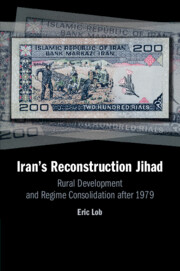Refine search
Actions for selected content:
56 results
3 - From the Local to National, the Personal to Civilizational
-
- Book:
- Homesick Nation
- Published online:
- 20 November 2025
- Print publication:
- 18 December 2025, pp 62-87
-
- Chapter
- Export citation
1 - Introduction
-
- Book:
- Homesick Nation
- Published online:
- 20 November 2025
- Print publication:
- 18 December 2025, pp 1-28
-
- Chapter
- Export citation
Epilogue
-
- Book:
- Homesick Nation
- Published online:
- 20 November 2025
- Print publication:
- 18 December 2025, pp 212-221
-
- Chapter
- Export citation
4 - Embedded Migration, Innate Xiangchou
-
- Book:
- Homesick Nation
- Published online:
- 20 November 2025
- Print publication:
- 18 December 2025, pp 88-124
-
- Chapter
- Export citation
Reconceptualizing the “Rural Problematique”: “The Migrant” as the Demonstrative Case for Policy Inertia in Canada
-
- Journal:
- Canadian Journal of Political Science/Revue canadienne de science politique , First View
- Published online by Cambridge University Press:
- 19 November 2025, pp. 1-27
-
- Article
-
- You have access
- Open access
- HTML
- Export citation
Assessing multidimensional well-being impacts of sustainable agriculture options in rural Malawi using multi-criteria analysis
-
- Journal:
- Environmental Conservation / Volume 52 / Issue 4 / December 2025
- Published online by Cambridge University Press:
- 07 August 2025, pp. 196-204
-
- Article
-
- You have access
- Open access
- HTML
- Export citation
The Significance of Small Things: Small Hydropower in the People’s Republic of China, 1949–1983
-
- Journal:
- Comparative Studies in Society and History / Volume 67 / Issue 1 / January 2025
- Published online by Cambridge University Press:
- 07 November 2024, pp. 141-168
-
- Article
-
- You have access
- Open access
- HTML
- Export citation
Scrutinizing the Expanding Scope of Geographical Indication Protection: A Critical Analysis of the Justifications for the Anti-Evocation Measures
-
- Journal:
- World Trade Review / Volume 23 / Issue 1 / February 2024
- Published online by Cambridge University Press:
- 26 October 2023, pp. 20-46
- Print publication:
- February 2024
-
- Article
- Export citation
Economic Enfranchisement, Goal Setting, and Rural Development
-
- Journal:
- Journal of Agricultural and Applied Economics / Volume 54 / Issue 4 / November 2022
- Published online by Cambridge University Press:
- 28 October 2022, pp. 634-655
-
- Article
-
- You have access
- Open access
- HTML
- Export citation
Role of small-scale dairy production systems in central Mexico in reducing rural poverty
-
- Journal:
- Experimental Agriculture / Volume 58 / 2022
- Published online by Cambridge University Press:
- 10 October 2022, e40
-
- Article
- Export citation
Land-Use Change Conflicts and Anti-Corporate Activism in Indonesia: A Review Essay
-
- Journal:
- Journal of East Asian Studies / Volume 22 / Issue 2 / July 2022
- Published online by Cambridge University Press:
- 21 July 2022, pp. 333-356
-
- Article
-
- You have access
- Open access
- HTML
- Export citation
Mobilization Campaigns and Rural Development: The East Asian Model Reconsidered
-
- Journal:
- World Politics / Volume 73 / Issue 2 / April 2021
- Published online by Cambridge University Press:
- 15 March 2021, pp. 205-242
- Print publication:
- April 2021
-
- Article
- Export citation
Introduction
-
- Book:
- Iran's Reconstruction Jihad
- Published online:
- 06 February 2020
- Print publication:
- 27 February 2020, pp 1-14
-
- Chapter
- Export citation

Iran's Reconstruction Jihad
- Rural Development and Regime Consolidation after 1979
-
- Published online:
- 06 February 2020
- Print publication:
- 27 February 2020
Differences in women’s and men’s conservation of cacao agroforests in coastal Ecuador
-
- Journal:
- Environmental Conservation / Volume 46 / Issue 4 / December 2019
- Published online by Cambridge University Press:
- 13 August 2019, pp. 302-309
-
- Article
- Export citation
Evaluating an Information Campaign about Rural Development Policies in FYR Macedonia
-
- Journal:
- Agricultural and Resource Economics Review / Volume 48 / Issue 1 / April 2019
- Published online by Cambridge University Press:
- 18 April 2018, pp. 117-141
-
- Article
-
- You have access
- Open access
- HTML
- Export citation
The Hidden Gaps in Rural Development: Examining Peasant–NGO Relations through a Post-earthquake Recovery Project in Sichuan, China
-
- Journal:
- The China Quarterly / Volume 233 / March 2018
- Published online by Cambridge University Press:
- 09 January 2018, pp. 43-63
- Print publication:
- March 2018
-
- Article
- Export citation
People Left Behind: Transitions of the Rural Poor
-
- Journal:
- Journal of Agricultural and Applied Economics / Volume 23 / Issue 1 / July 1991
- Published online by Cambridge University Press:
- 08 February 2017, pp. 75-83
-
- Article
- Export citation
Tactics of the Governed: Figures of Abandonment in Andean Peru
-
- Journal:
- Journal of Latin American Studies / Volume 49 / Issue 2 / May 2017
- Published online by Cambridge University Press:
- 24 October 2016, pp. 327-353
- Print publication:
- May 2017
-
- Article
-
- You have access
- HTML
- Export citation
Preferences for Residential Development Attributes and Support for the Policy Process: Implications for Management and Conservation of Rural Landscapes
-
- Journal:
- Agricultural and Resource Economics Review / Volume 32 / Issue 1 / April 2003
- Published online by Cambridge University Press:
- 15 September 2016, pp. 65-82
-
- Article
- Export citation
